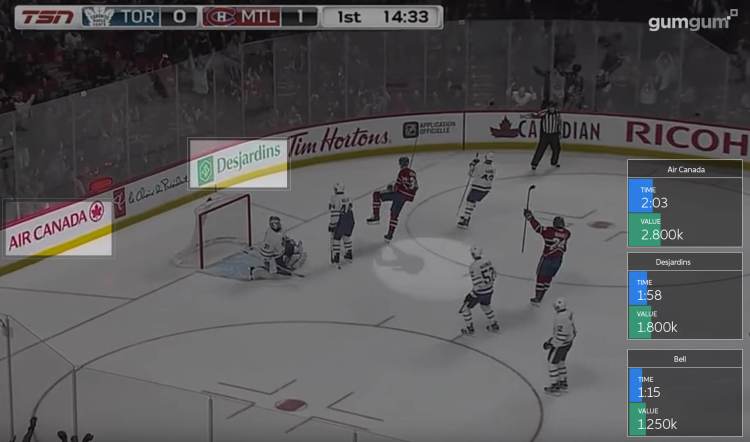Presented by GumGum
Ever since the days of broadcast-only media buying, brands have struggled to calculate the total exposure they get by wallpapering a stadium with their logo or sponsoring a team or athlete. Today, that struggle is compounded by new ways in which fans are consuming sports content — via social media, streaming, and in replays — each of which comes with its own challenges to tracking and measuring.
Technology can ensure that the value of image and video content is comprehensively understood, and consistently measured. Remember, television broadcasts represent a single piece of video content (with a single valuation vendor), whereas social media provides thousands.To analyze images and videos at scale requires AI-based technologies such as computer vision, which automatically identifies what’s inside pictures and videos versus relying on text-only search for, say, brand relevant hashtags. With a comprehensive understanding of image and video content, marketers can know their true ROI, inform their strategy, drive revised budget allocation, and more.
Applying computer vision is the approach GumGum took to solve this long-standing challenge for rights holders and advertisers alike. With GumGum Sports, a new division of its Visual Intelligence unit, the company is able to uncover value where it was previously unquantifiable. As a result, it’s now possible to measure the full ROI of sports sponsorships across all media formats — broadcast, streaming, replays and social media.
Game highlights + visual signage = Huge media value opportunity
Broadcast exposure is finite, both from an audience and time perspective. Social, in contrast, is limitless, with video highlights from sports games being posted, liked, and reshared hundreds of thousands of times.
For a typical National Hockey League (NHL) game, a TV broadcast contains 60 minutes of game footage and airs on several channels, with each channel having a specific audience size. Each sponsor therefore could have up to 60 minutes of exposure (referred to as duration) with a set volume of viewers.
On social media, however, posts about that same game could be shared by outlets with social media handles that have major followings, high average view rates, and meaningful engagement on each post.
Once social posts about a game are aggregated, it’s easy to see how the current media valuations from live event sponsorships are literally missing a key variable. Not to mention that on social media, fans can actually engage with the posts, versus the bystander role offered by broadcast.
But measuring the aggregate value of social media shares hasn’t been done before because it’s really difficult. Computer vision solves the two main challenges: finding posts with value to sponsors, and analyzing the quantity of those posts. The price to analyze thousands of images or videos can become cost prohibitive without computer vision, even if they were identifiable without textual markers.
The end of “It can’t be done”
Processing, understanding, and identifying information in still images is hard enough. Yet for time-strapped marketing leaders, even harder questions — “which visible signage locations will drive the most overall value across TV and social” or “which teams across my sponsorship portfolio are driving the most value for the investment” — are vital.
GumGum Sports’ computer vision technology is uniquely capable of deconstructing live broadcasts and associated video content down to individual frames, breaking down the value of that precisely evaluated exposure so marketers can get a better understanding of what’s working for their brand — and how well it’s working. Instead of investing in a sport for subjective reasons (your CMO played football in college, or your CEO is a rabid hockey fan), computer vision brings objectivity to these decisions, making it possible to marry the creative with the informed.
Brands buy the proverbial “cow”
In truth, up to now, brands hadn’t been paying for all this added exposure, but they weren’t able to understand the value derived from it either. Without a computer vision-powered solution, there’s no way to put a value on this cumulative activity.
Simultaneously, rights holders haven’t been able to monetize the breadth of the exposure a sponsor could earn from working with them. Now rights holders can stop giving away value, and advertisers can get the data they’re hungry for and a hard ROI to point to for more informed future decisions.
For all sports, this is a game-changing application of emerging technology.
Sponsored posts are content produced by a company that is either paying for the post or has a business relationship with VentureBeat, and they’re always clearly marked. Content produced by our editorial team is never influenced by advertisers or sponsors in any way. For more information, contact sales@venturebeat.com.

